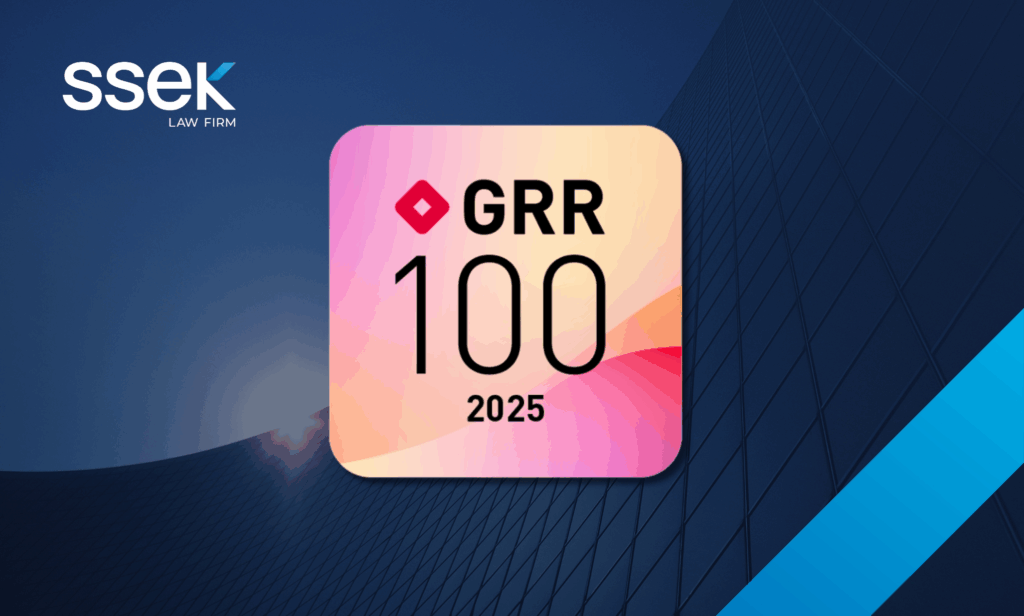Introduction
In a landmark decision[i] rendered on April 1, 2025, the Hon’ble Supreme Court held (“Supreme Court”)that the Hon’ble National Company Law Appellate Tribunal (“NCLAT”) transgressed its jurisdiction by interfering with the resolution plan clause pertaining to the treatment of recoveries from fraudulent and wrongful trading applications filed under Section 66 of the Insolvency and Bankruptcy Code, 2016 (“Code”) .
Brief Background
On November 20, 2019, the Reserve Bank of India (“RBI”) superseded the board of directors of Dewan Housing Finance Limited (“DHFL”) under Section 45- IE(I) of the Reserve Bank of India Act, 1934, owing to governance concerns. On November 29, 2019, the RBI filed a company petition before the Hon’ble National Company Law Tribunal, Mumbai (“NCLT”) to initiate corporate insolvency resolution process (“CIRP”) against DHFL, which was admitted vide an order dated December 3, 2019.
Transaction auditors appointed by the Administrator of DHFL, uncovered glaring discrepancies and financial irregularities, including fund diversion, fabricated records, round-tripping of funds, and use of diverted amounts to create assets. As a consequence, the Administrator filed certain applications for the avoidance of such transactions, which were inter alia preferential, undervalued, extortionate and fraudulent under Sections 43, 45, 47, 49, 50 and 66 (fraudulent or wrongful trading transactions) before the Hon’ble NCLT.
The committee of creditors (“CoC”) chose to amend the request for a resolution plan (“RFRP”) in light of the complex transactions forming the subject matter of the “avoidance applications” filed under Section 66 of the Code. This amendment stated that the successful resolution applicant would received the benefit of recoveries from applications filed under Section 66 of the Code in lieu of which all prospective resolution applicants (“PRAs”) may ascribe a value to the same under their respective resolution plans. Simultaneously, the benefit of recoveries from applications filed under Chapter III of the Code were to be retained for the benefit of the CoC.
The CoC, on January 15, 2021, by a majority of 98.94%, approved the resolution plan submitted by Piramal Capital and Housing Finance Limited (“Piramal”) whereunder, a value of INR1 was ascribed to the recoveries under the applications filed under Section 66 of the Code.
The Hon’ble NCLT approved Piramal’s resolution plan vide its order dated June 7, 2021. However, certain debenture holders and ex-promoters of DHFL challenged the said order before the Hon’ble NCLAT, inter alia asserting that recoveries from the applications filed under Section 66 of the Code must benefit the creditors of DHFL i.e. the CoC, and cannot be retained by Piramal.
The Hon’ble NCLAT vide its order dated January 27, 2022 (“NCLAT Order”), set aside the term in Piramal’s resolution plan, which permitted the successful resolution applicant i.e. Piramal to appropriate recoveries from the applications filed under Section 66 of the Code. The NCLAT’s finding was primarily rendered by placing reliance on foreign jurisprudence. It concluded that the issue of appropriation of recoveries from avoidance applications lies outside the scope of the CoC’s commercial wisdom and ought to be adjudicated by the Hon’ble NCLT. However, contrary to its own findings, the Hon’ble NCLAT sent the resolution plan back to the CoC for reconsideration on this aspect.
Appeals before Supreme Court
The NCLAT’s Order was challenged not only by Piramal but also certain banks which comprised the CoC. Additionally, the NCLAT Order was also challenged by 63 Moons itself, limited to the direction of the Hon’ble NCLAT that Piramal’s resolution plan be sent back to the CoC for reconsideration on the aspect of recoveries from applications filed under Section 66 of the Code.
CoC’s Case
Led by Union Bank of India, certain banks which comprised the CoC challenged the NCLAT Order before the Hon’ble Supreme Court inter alia on the ground that the recoveries from avoidance applications were assets of the corporate debtor and fall within the realm of the CoC’s commercial wisdom. The CoC’s case was the reason to amend the RFRP to provide that benefit of recoveries from applications filed under Section 66 of the Code may be retained by the resolution applicants. In doing so, the CoC was able to maximise the assets of the corporate debtor by negotiating higher resolution amounts with the PRAs.
Observations and Analysis by the Supreme Court
The Supreme Court overruled the NCLAT Order holding that the resolution plan was an outcome of the commercial bargain struck between Piramal and the CoC after several rounds of negotiations, deliberations and exploring the feasibility and viability of the plan. It held that in the absence of any perversity that was palpable on the face of the plan, the Hon’ble NCLAT ought not to have interfered with the said clause approved by the CoC and the Hon’ble NCLT. Distinction between Avoidance Applications under Chapter III and Chapter VI
The Hon’ble Supreme Court examined the statutory scheme of the Code and held that the legislative intent to demarcate powers of the Hon’ble NCLT in respect of avoidance applications under Chapter III and applications under Chapter VI, i.e., those filed under Section 66, is patently clear. It held that the Hon’ble NCLT is not empowered to avoid or set aside the fraudulent transactions since the properties and persons involved in the fraud may or may not be ascertainable. The Hon’ble NCLT is only empowered to pass orders against persons who were knowingly parties to such fraud after making an inquiry to that extent.
Therefore, the Hon’ble Supreme Court concluded that unlike applications filed under Section 43, 45 and 50 to avoid or set aside certain transactions, applications related fraudulent and wrongful trading filed under Section 66 of the Code cannot be considered avoidance transactions. Further, if the resolution professional files common applications under Sections 43, 45, 50 and 66, the Hon’ble NCLT must distinguish and decide which provision applies to each of the applications.
Ascribing notional value of INR 1 to fraudulent transactions under Section 66 by Piramal
The Hon’ble Supreme Court held that the notional value of INR 1 assigned by Piramal to the applications filed under Section 66 of the Code is not illegal. It reasoned that, in light of uncertainties in potential recoveries from Section 66 transactions, any estimation done regarding the value of such transactions would be a wild guess.
Supremacy of commercial wisdom and limited judicial interference
In view of Essar Steel[ii]and Ghanshyam Mishra[iii],it was noted that paramount importance must be given to the CoC’s commercial wisdom. The scope and jurisdiction of the Hon’ble NCLT and Hon’ble NCLAT to interfere in a resolution plan should be limited to its evaluation under Section 31 and Section 61(3) of the Code, respectively. The Hon’ble Supreme Court also noted that the legislature has consciously not provided justness of the commercial decision of the CoC as a ground for challenge of the resolution plan.
Clarification regarding applicability of Venus Recruiters Judgment to treatment of avoidance recoveries
The Hon’ble Supreme Court held the Hon’ble NCLAT’s reliance on the decision of the Delhi High Court in Venus Recruiters Private Limited vs. Union of India[iv], rendered by a single judge, is misconceived since the same had already been set aside by the division bench in Tata Steel BSL Limited vs. Venus Recruiter Private Limited.[v] Furthermore, it was clarified that the question before the Hon’ble Delhi High Court was about the survivability of avoidance applications after the approval of the resolution plan, not the treatment of recoveries from such applications.
Reference to Regulation 37A of Liquidation Regulations is erroneous
Moreover, the Hon’ble Supreme Court set aside the Hon’ble NCLAT’s reliance on Regulation 37A of the Insolvency and Bankruptcy Board of India (Liquidation Process) Regulations, 2016 (“Liquidation Regulations”), which allows transfer of a non-realisable asset. The Hon’ble NCLAT had reasoned that in the absence of a similar provision in the Insolvency and Bankruptcy Board of India ((Insolvency Resolution Process for Corporate Persons) Regulations, 2016 (“CIRP Regulations”), the recoveries from avoidance applications cannot be assigned to the resolution applicant under CIRP.
The Hon’ble Supreme Court held that the Hon’ble NCLAT’s reasoning is misconceived since Regulation 37(a) of the CIRP Regulations permits the plan to make a provision for transfer of all or part of the assets.
Key Takeaways
The Hon’ble Supreme Court has once again reaffirmed the principle that CoC is best placed to make commercial determinations in its wisdom, provided the resolution plan is in accordance with the law. The decision is in line with Regulation 38(2)(d) (inserted vide amendment dated June 14, 2022)[vi] of the CIRP Regulations, which states that the PRAs may provide for the treatment of the proceeds, if any, from the avoidance proceedings under the resolution plan. While Piramal’s resolution plan was approved prior to the said amendment, it is clear that the legislature always intended to allow the CoC to deal with all assets of the corporate debtor in its commercial wisdom, including recoveries from avoidance applications.
The Hon’ble Supreme Court’s approach validates the CoC’s right to strategically transfer or retain certain assets to ensure value-maximisation for the creditors. The Judgment is a welcome addition to the jurisprudence holding the commercial wisdom of the CoC to be supreme. It is a decision likely to continue and instil confidence in prospective PRA’s that the legitimate bargain struck for the resolution of the corporate debtor would not be tampered with.

For further information, please contact:
Raunak Dhillon, Partner, Cyril Amarchand Mangaldas
raunak.dhillon@cyrilshroff.com
[i] Piramal Capital and Housing Finance Limited v. 63 Moons Technologies Limited & Others, 2025 SCC Online SC 690.
[ii] Essar Steel India Limited vs. Satish Kumar Gupta, 2020 (8) SCC 531.
[iii] Ghanashyam Mishra and Sons Private Limited vs. Edelweiss Asset Reconstruction Company Limited, (2021) 9 SCC 657.
[iv] 2020 SCC OnLine Del 1479.
[v] LPA No. 37 of 2021.
[vi] Inserted by Notification No. IBBI/2022-23/GN/REG084, dated 14.06.2022 (w.e.f. 14.06.2022).





